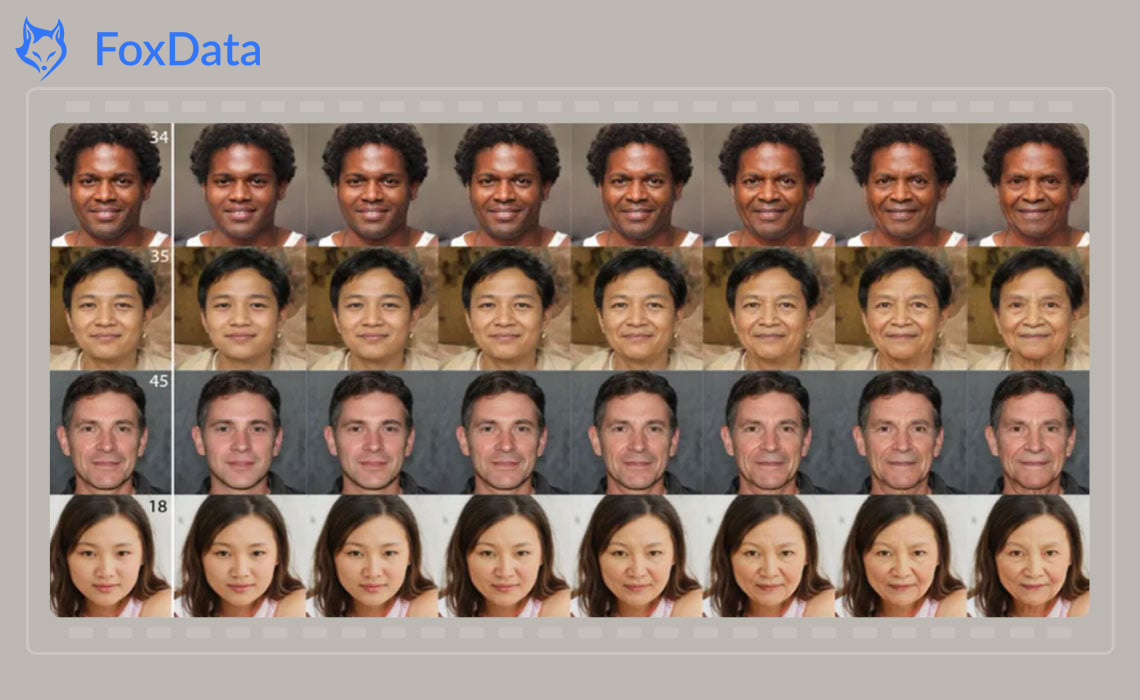Once upon a time, it was a significant challenge to make actors appear older or younger in movies. The amount of postproduction work required to achieve realistic results was immense. However, Disney researchers have now introduced FRAN, a new artificial intelligence tool that can age or de-age an actor in a fraction of the time it used to take.
According to Disney Research Studios, FRAN (which stands for face re-aging network) is a neural network that was trained using a large database of pairs of synthetic faces at different ages. This eliminates the need to find thousands of real images of people at various ages with matching facial expressions, poses, lighting, and backgrounds.
Using this data, FRAN can predict how and where regions of a real person's face will age, and then overlay the new features onto video footage. Disney Research Studios claims that this technology is "the first practical, fully-automatic and production-ready method for re-aging faces in video images." Based on video examples provided by Disney, FRAN outperforms Snapchat's aging filter.
However, there are limitations to FRAN, and this type of study is not unique. According to Disney's study, FRAN may not be suitable for drastic adjustments like re-aging to extremely early ages, and it does not account for graying of scalp hair when aging up an actor. Manual VFX work and prosthetic makeup application are not subject to these constraints, so FRAN is unlikely to replace many industry jobs any time soon.
Nevertheless, the results are as impressive, if not better, than real-world on-screen examples from just a few years ago. We all experienced the uncanny valley when we saw a de-aged Robert Downey Jr. in
Captain America: Civil War in 2016.
Considering Disney's reputation for reproducing or de-aging actors on the big screen, it's no surprise that the company has been working on automating visual effects. Characters like Nick Fury (Samuel L. Jackson), Hank Pym (Michael Douglas), and Ego the Living Planet (Kurt Russell) from the Marvel Cinematic Universe, as well as Leia Organa (Carrie Fisher) and Wilhuff Tarkin (Peter Cushing) from Star Wars, have all undergone visual alterations in recent years.
This is not the first time Disney has taught an AI to modify someone's appearance in video footage. In 2020, the company's research arm unveiled a "photo-realistic" deepfake tool. Industrial Light & Magic, Disney's visual effects business, has also developed solutions to reduce real post-production VFX, such as gigantic LED video panels for
The Mandalorian.
Although this technology has potential benefits in filmmaking, it is unclear whether Disney plans to make it available to the general public. Furthermore, there is still plenty of room for improvement, so it may take some time before we see this level of intricate visual effects work fully automated within the industry.
Now just join
FoxData and embark on a journey of marketing excellence as we unveil the latest industry news, unveil powerful growth strategies, and present cutting-edge measurement solutions.
With FoxData as your guide, watch your performance soar to new heights!
All content, layout and frame code of all FoxData blog sections belong to the original content and technical team, all reproduction and references need to indicate the source and link in the obvious position, otherwise legal responsibility will be pursued.

